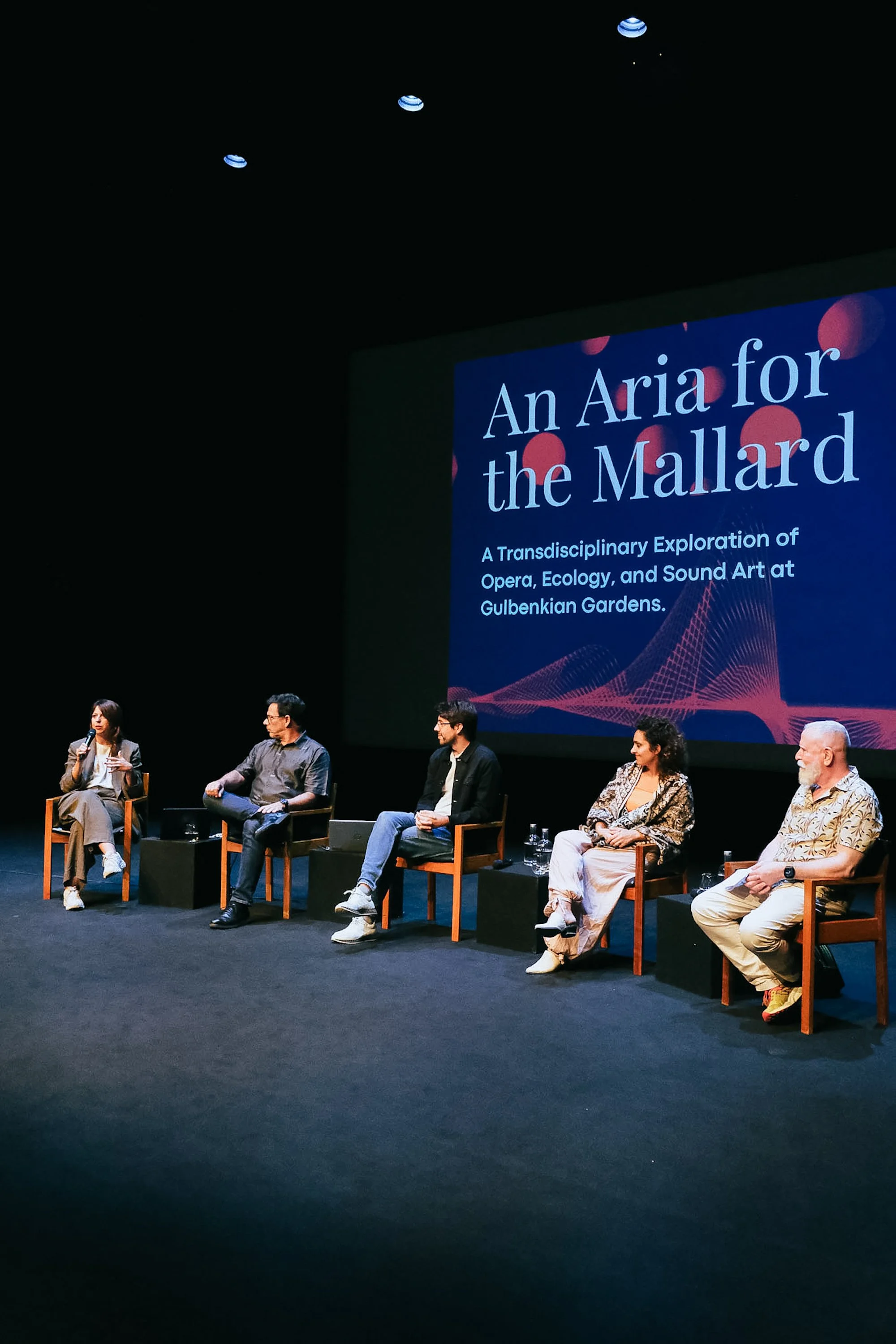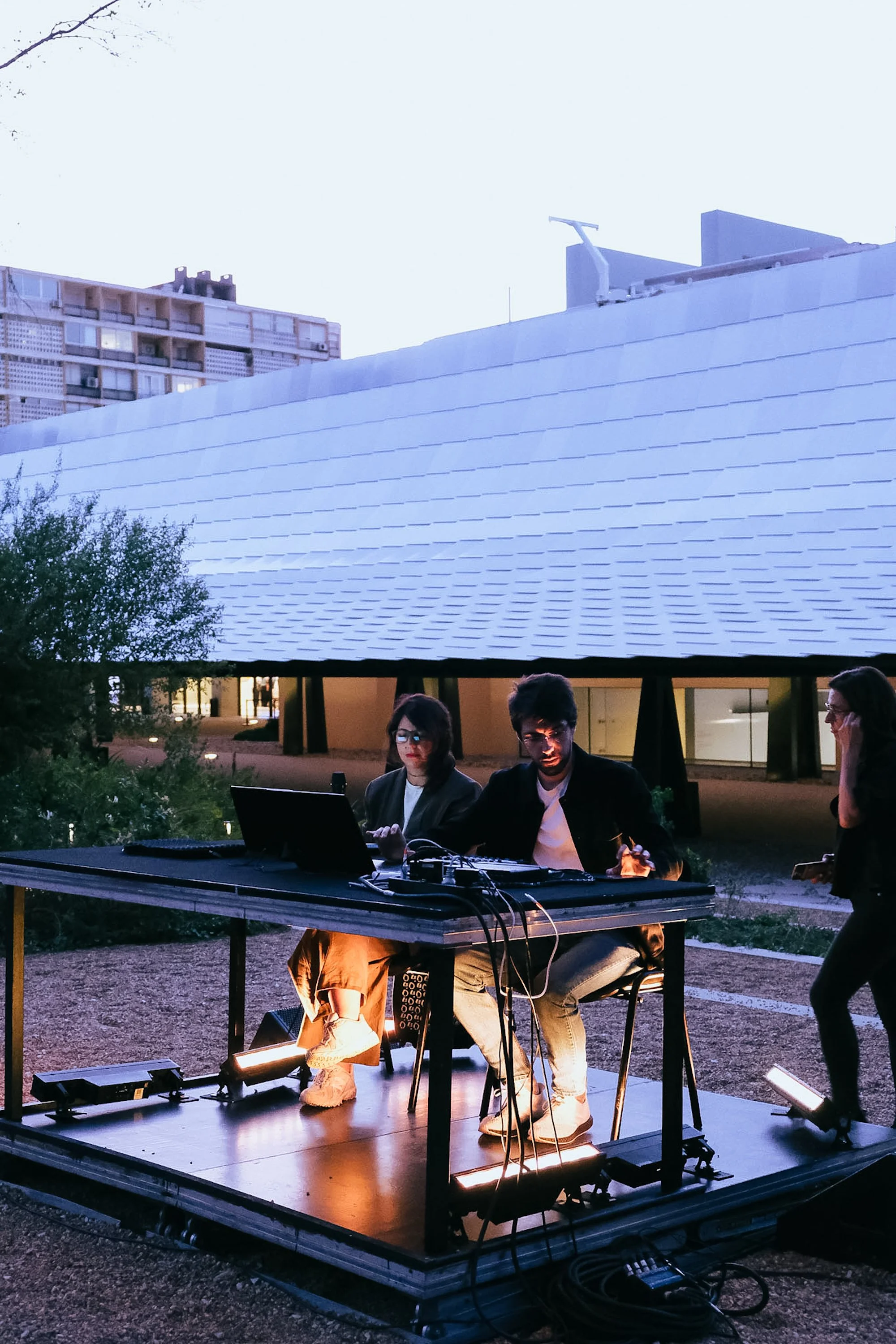 Image 1 of 1
Image 1 of 1


Lesson of the future
Premiere
29/03/2017 - Festival Peças Frescas 2017 - Teatro-estúdio Mário Viegas - São Luiz Teatro Municipal (PT)
Awards
Music Award at Mostra Nacional de Jovens Criadores 2018 by Fundação da Juventude
Programme notes
Lesson of the future, is it fiction or reality? Is it music or film? The truth is that the concept of image is transversal, and the concept of reality? Everything can be summed up in uncertainties but what is certain is that something will happen, the question is where and how.
Written in 2016 as part of my Master's Degree in Music — Composition at the Escola Superior de Música de Lisboa (PT).
© PRS/MCPS/SPA ISWC T-045.692.003-8
Text and Voice by Júlia Durand
Good morning, class. Take advantage of it – for the rest of the lesson, you’ll have to do as I say. As you might have guessed, I’m your professor for today’s lesson in music electronics.
Right. Now. Let’s start with volume. Become the master of the auditory systems that hide in your friend’s ears. You can turn the volume down, down, down, dooown… or turn it up, up, up, UP to seriously injure your auditory cells. All you need to do is click that button there – no, not that one – yes, that one – and draaaaaaag it up. Good. Now you can draaaag it right down. Let’s try something else now. Oh, yes – feel free to call me if you have any questions about volume. If I can’t hear you calling – well, you know how to turn it up, and call me louder, don’t you?
By the end of this lesson, you will dream of synthesis – additive and subtractive – frequency modulation, sine waves, and… please, don’t back away. Not yet.
Ah, yes. See that long bar on your screen? That’s your sound. If you select its tip and drag it – keep dragging it – just a little bit more – you can stretch it. Make it go on and on and on and on and on and on and on and on and on and on and on and on and on an – you get the idea. Of course, you could also make it go oooooooooooooooooooon. Like that. Keep this in mind: nothing that is done can’t be undone. You can also make it shorter. Here’s how you make it sh – Ah. I see you figured it out for yourse – Yes, thank you, you can stop doin – Stop shortening the s – Do I need to get angry, class? Right.
Of course, you can also slow sound down, or speed it up. Does anyone know what other element of sound this might affect?... No? No, I suppose not. Pitch – it affects pitch! If I start slowing it down, I’ll sound like the most ominous, threatening baritone you’ve ever heard. A slow, deep baritone. On the other hand, if you speed me up – go on, speed me up, don’t be afraid. I’ll sound like a very hyperactive soprano. Why it happens, you ask? You might say it has to do with frequency and cycles and – but I won’t bore you with that know.
Now – panning. Do you see those speakers that surround you? Yes, you’re surrounded… Give yourself the glory of panning. Grab that sound that’s floating around you and throw it over here. Isn’t it nice how sound can travel from one speaker to the other? It can travel faster that you… And you can even put it it the back. No, I’m not the one whispering over your shoulder right now. Blame panning... Look, it can even waltz in circles around the room! HEY, YOU. Yes, you there, texting. Put your phone away. Otherwise I’ll be compelled to use it in a demonstration of panning and throw it across the room. Thank you.
Also, don’t forget that certain effects can be very important. Some call them filters. Did you know that your computer contains, inside, a large cathedral, a cave, and a very small, muffled room? That’s right. And if you manipulate it in the right way, you can go from the mighty cathedral to a tiny room in just a few seconds! And they said teleportation couldn’t be invented.
Well, thank you for your patience, class. In the next lesson, we’ll focus on altogether scarier things. After all, sound travels fast – it might even catch up to you one day. Now I’ll just fade out… goodbye, class… goodbye…
Are you performing this work? Submit your performance details to be featured in the upcoming events!
Scroll down for recording ↓
Premiere
29/03/2017 - Festival Peças Frescas 2017 - Teatro-estúdio Mário Viegas - São Luiz Teatro Municipal (PT)
Awards
Music Award at Mostra Nacional de Jovens Criadores 2018 by Fundação da Juventude
Programme notes
Lesson of the future, is it fiction or reality? Is it music or film? The truth is that the concept of image is transversal, and the concept of reality? Everything can be summed up in uncertainties but what is certain is that something will happen, the question is where and how.
Written in 2016 as part of my Master's Degree in Music — Composition at the Escola Superior de Música de Lisboa (PT).
© PRS/MCPS/SPA ISWC T-045.692.003-8
Text and Voice by Júlia Durand
Good morning, class. Take advantage of it – for the rest of the lesson, you’ll have to do as I say. As you might have guessed, I’m your professor for today’s lesson in music electronics.
Right. Now. Let’s start with volume. Become the master of the auditory systems that hide in your friend’s ears. You can turn the volume down, down, down, dooown… or turn it up, up, up, UP to seriously injure your auditory cells. All you need to do is click that button there – no, not that one – yes, that one – and draaaaaaag it up. Good. Now you can draaaag it right down. Let’s try something else now. Oh, yes – feel free to call me if you have any questions about volume. If I can’t hear you calling – well, you know how to turn it up, and call me louder, don’t you?
By the end of this lesson, you will dream of synthesis – additive and subtractive – frequency modulation, sine waves, and… please, don’t back away. Not yet.
Ah, yes. See that long bar on your screen? That’s your sound. If you select its tip and drag it – keep dragging it – just a little bit more – you can stretch it. Make it go on and on and on and on and on and on and on and on and on and on and on and on and on an – you get the idea. Of course, you could also make it go oooooooooooooooooooon. Like that. Keep this in mind: nothing that is done can’t be undone. You can also make it shorter. Here’s how you make it sh – Ah. I see you figured it out for yourse – Yes, thank you, you can stop doin – Stop shortening the s – Do I need to get angry, class? Right.
Of course, you can also slow sound down, or speed it up. Does anyone know what other element of sound this might affect?... No? No, I suppose not. Pitch – it affects pitch! If I start slowing it down, I’ll sound like the most ominous, threatening baritone you’ve ever heard. A slow, deep baritone. On the other hand, if you speed me up – go on, speed me up, don’t be afraid. I’ll sound like a very hyperactive soprano. Why it happens, you ask? You might say it has to do with frequency and cycles and – but I won’t bore you with that know.
Now – panning. Do you see those speakers that surround you? Yes, you’re surrounded… Give yourself the glory of panning. Grab that sound that’s floating around you and throw it over here. Isn’t it nice how sound can travel from one speaker to the other? It can travel faster that you… And you can even put it it the back. No, I’m not the one whispering over your shoulder right now. Blame panning... Look, it can even waltz in circles around the room! HEY, YOU. Yes, you there, texting. Put your phone away. Otherwise I’ll be compelled to use it in a demonstration of panning and throw it across the room. Thank you.
Also, don’t forget that certain effects can be very important. Some call them filters. Did you know that your computer contains, inside, a large cathedral, a cave, and a very small, muffled room? That’s right. And if you manipulate it in the right way, you can go from the mighty cathedral to a tiny room in just a few seconds! And they said teleportation couldn’t be invented.
Well, thank you for your patience, class. In the next lesson, we’ll focus on altogether scarier things. After all, sound travels fast – it might even catch up to you one day. Now I’ll just fade out… goodbye, class… goodbye…
Are you performing this work? Submit your performance details to be featured in the upcoming events!
Scroll down for recording ↓




























